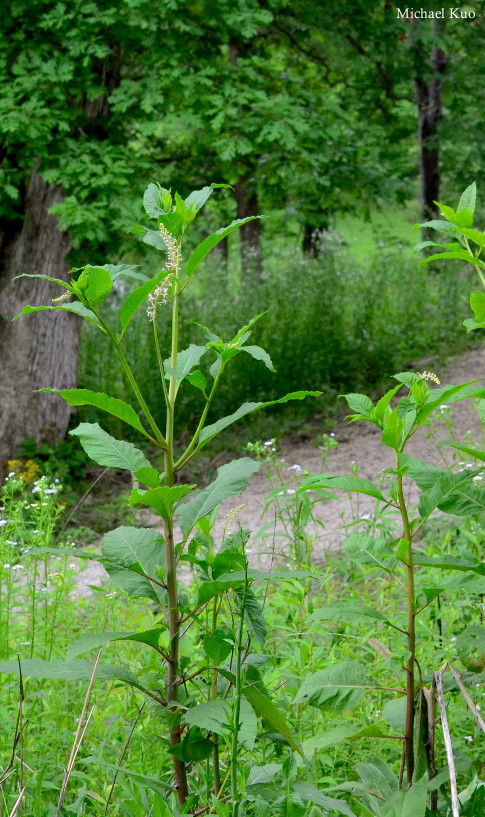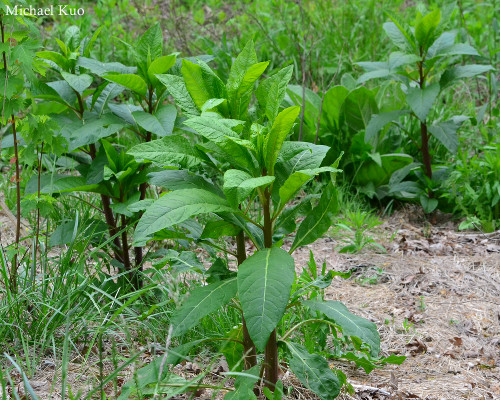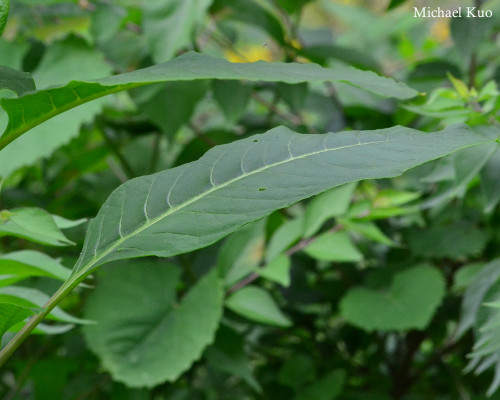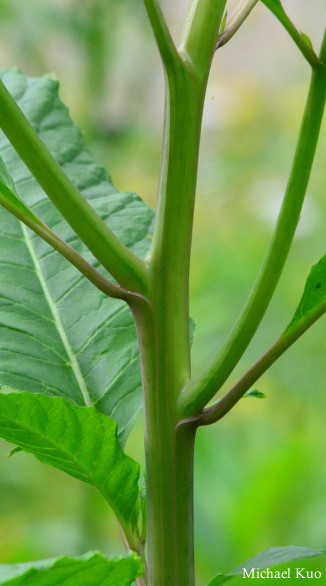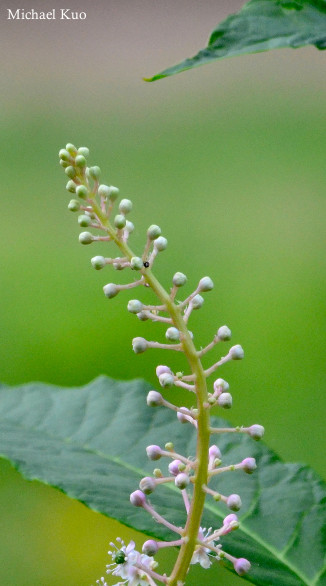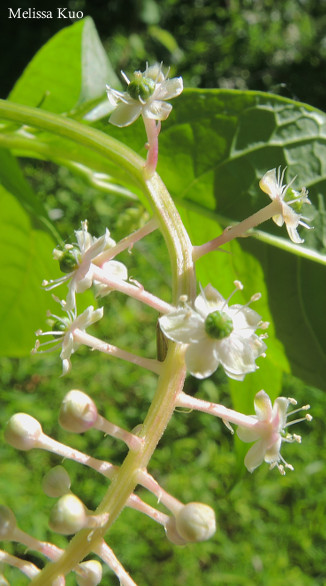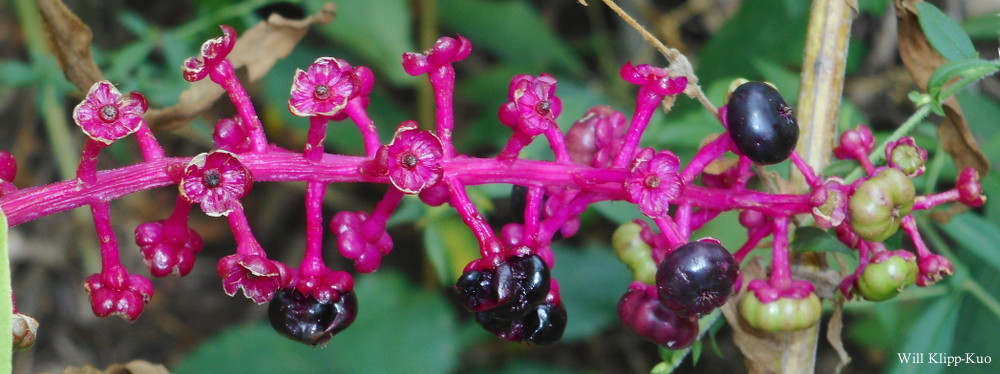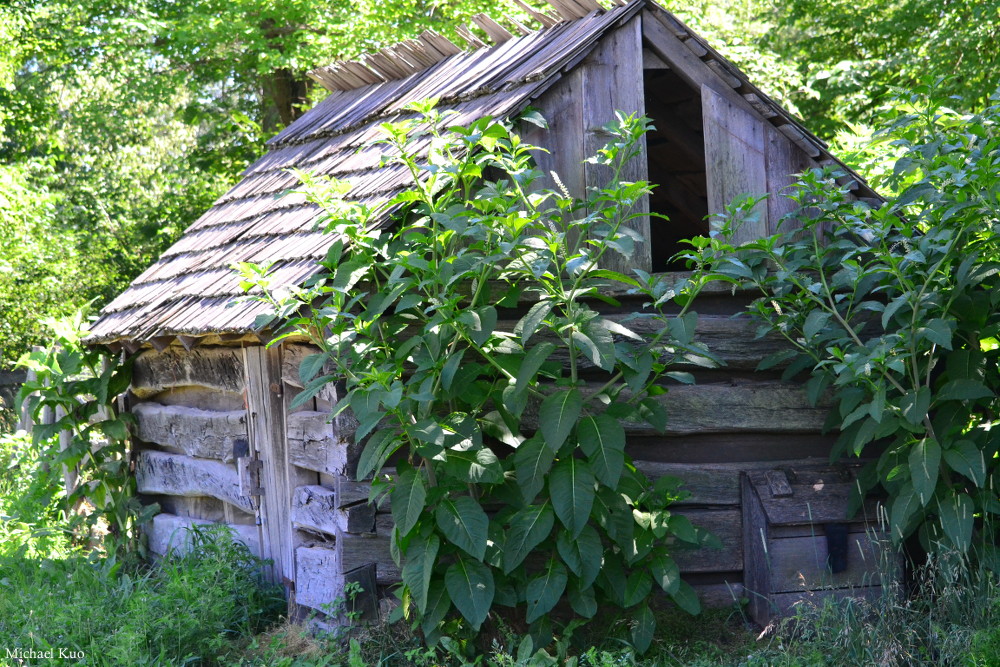 Phytolacca americana (pokeweed) |

|
|
Pokeweed—Phytolacca americana—is an amazing plant. It shoots up quickly in late spring, reaching heights of 10 feet or more by summer. Its flowers are beautiful, but often overlooked because they are dwarfed by the rest of the plant. However, when the berries develop where the flowers were, there is no missing them: the berries are dark purple, while the flower stalk turns bright purplish pink. Phytolacca americana is reported as poisonous to humans by all of our sources (see list below), though there may be nontoxic parts of the plant, or ways to remove toxins in the cooking process. Birds, anyway, rely on the berries as a food source; American robins, gray catbirds, and cedar waxwings are among the species documented to eat pokeweed berries. |
|
|
|
|
|
|
|
|
|
|
|
|
|
References: GN Jones 1971, Wilkinson & Jacques 1972, Kricher & Morrison 1988, RL Jones 2005, Voss & Reznicek 2012, Kurz 2014, Mohlenbrock 2014, Hilty 2017, USDA 2017. Kuo, Michael & Melissa Kuo (August, 2017). Phytolacca americana (pokeweed). Retrieved from the midwestnaturalist.com website: www.midwestnaturalist.com/phytolacca_americana.html All text and images © , midwestnaturalist.com. |

